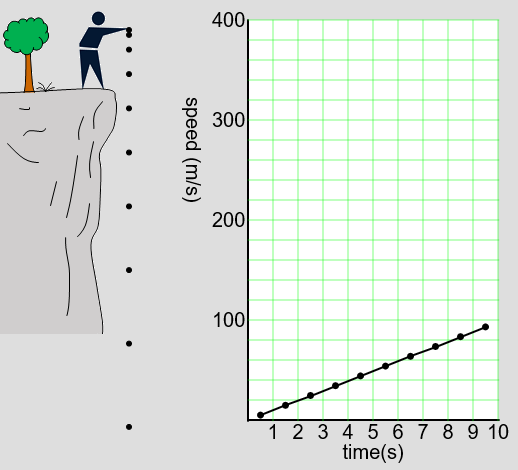Motion of changing speed
When a force of a certain size and direction acts on an object, the object moves at a constant rate of speed. These movements are easy to find around us.
For example, the speed of a skier descending a slope by gravity increases. However, when a running car stops by applying the brakes, the speed gradually slows down due to friction.
When an object is dropped straight or thrown up, the object's speed is constantly changed by force.

Time-speed graph when dropping objects
If you drop a hardball off a cliff, assuming there is no friction, you can see that the ball's speed constantly increases over time. This is because gravity acts in the same direction as the object's motion.
In this way, if a certain amount of force continues to act in the same direction as the object's motion direction, the object's speed increases.
If a force of a certain amount continues to act opposite to the direction of motion, the speed decreases. In other words, if the force acts in parallel with the direction of motion of the object, the speed of the object changes constantly.
Acceleration
Acceleration is the degree to which the speed changes over a period of time. Acceleration is obtained by dividing the amount of change in velocity by time.
If the initial velocity was V1, and the velocity changed to V2 after time t, then the acceleration a is calculated as follows.
If the speed increases, the acceleration has a positive (+) value, and if the speed gradually decreases, the acceleration has a negative (-) value.
Newton's second law of motion
When a force is applied to an object, a change in velocity (acceleration) occurs. The greater the applied force, the greater the acceleration. And the acceleration that occurs is inversely proportional to the mass. In other words, the heavier the object, the more difficult it is to change the motion.